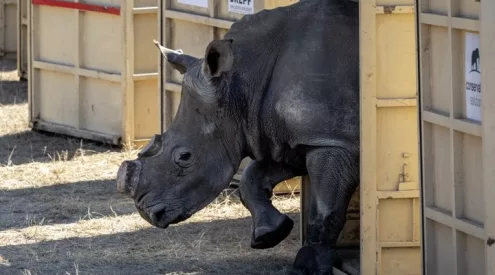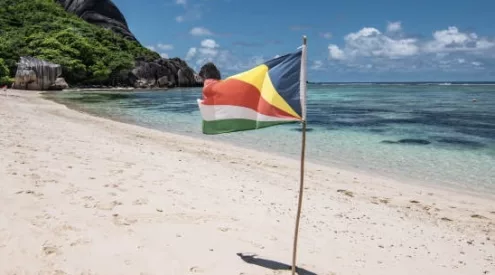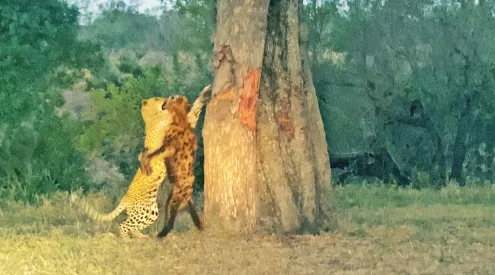It’s almost ninety years since naturalist Cherry Kearton once set foot on this very spot. I look out over the calm waters of House Bay and catch the reflection of gulls darting above. Their shrieks and cries are amplified by the surrounding silence, broken only by the waves crashing against the island’s rocky coastline.
The narrow beach in front of me has been isolated for years. Stretching out towards Boom Point on my left and the wreck of an old fishing vessel on my right are chalk-white sands that know little more than the careful footsteps of the seabirds who inhabit them. In the direction of the wrecked vessel I can see Crowned cormorants nesting elusively amidst the rust and overgrowth, and a small group of African penguins start to gather in the far off corner of the beach after a long day at sea.
Dassen Island was the first of South Africa’s inshore islands to have a publicly released conservation plan, and remains an important breeding sanctuary for a variety of endangered seabirds. My interest in the island was sparked through Cherry Kearton’s Island of Penguins – a humorous and heartfelt account of his stay in the 1920’s, when the island was home to over a million African penguins. After months of research in which I learnt about the tragic oil spills of the Apollo Sea and MV Treasure, as well as the dire situation that the island’s inhabitants have found themselves in today, I finally heard from conservation manager Johan Visagie that there was a chance of seeing it all for myself – and the opportunity to retrace Kearton’s footsteps.
By the time Kearton made it to Dassen Island he was well established in field of wildlife documentary, and had an impressive list of innovations to boast. He was the first to compile a photographic anthology of birds, the first to use camouflage to capture intimate images of animals in the wild, and the first to film aerial landscapes from an airplane. Kearton was such a big figure in his time that he even inspired David Attenborough, who attended one of his talks on wildlife filmmaking, to follow in his footsteps.
But with Attenborough thousands of kilometres back home in England, Kearton and his wife Adda Forrest – a singer he had met in South Africa – had Dassen Island bobbing in full view. They watched it from the bow of a local West Coast fishing vessel, separated by a rough passage of ocean. Without the small wooden jetty that stands on the island today, the only access to the island would be via a small paddle boat lowered from the main vessel at sea. And so like Gulliver – a figure Kearton would later compare himself to – they were churned out of rough seas with their few belongings into a peculiar land ruled by little people: in this case they wore neat black suites, white shirts and “tiny black hobble skirts.”
During his stay on Dassen Island Kearton spent months documenting the habits of the African penguin. Although he liked the name “nature’s little comedians,” he was well aware that African penguins lived difficult and often tragic lives. Even as far back as the 1920’s Kearton was concerned that the population size on the island had come to a halt. I still struggle to imagine what he might have thought if he had to see the island today.
Years of guano scraping have removed the fertile layer of guano that the penguins use to build their nests. When the guano scraping finally came to an end the old lime-washed Guano Scraper’s Quarters scattered around House Bay were converted to help with the collection of penguin eggs, following the commercialization of the penguin egg industry. This had drastic consequences for the penguin population, with an estimate of thirteen million eggs being collected between 1900 and 1930 alone. It was not until the 60’s that egg collection came to an end. During a conference at the Kruger National Park Kearton’s photographs of the island taken during his stay in the 20’s were compared to more recent images. The result: an official ban on egg collecting in 1967.
Jump forty five years ahead and I am standing looking out over the still shores of Dassen Island. A cold wind comes in from the south and the waves crash over Boom Point, a narrow stretch of land to the north that shelters House Bay from the rough Atlantic ocean. From the jetty Kelp gulls watch for shimmers on the sea that might signal a passing school of fish, while sterns dot the sand and Whitefronted plovers run across the beach like little ghosts.
In the far corner of the bay I watch the small group of penguins start to grow as the evening comes in and others emerge from behind the waves. There are at most twenty, gathering below a steep boulder that has been bleached yellow by the sea and the sun. In my mind is an image of Kearton’s where thousands of penguins are scattered across the length of this exact beach, and it makes me think of how drastically things have changed. But it’s not long before I catch the sight of another penguin coming ashore from behind the waves. He swims gracefully until he can run, and when he can run he picks himself up with his small back legs and runs like hell.
When he finally makes it to safety – the waves crashing against the shore now a reasonable distance behind him – he stops for a moment to straighten out his neat little suit. Eventually satisfied, he wobbles over to the others waiting by the boulder at the end of the beach.
It reminds me that even though the waters around Dassen Island are overfished, and a population of over a million penguins has been reduced to just over eight thousand, somehow these birds, who still seem quite happy to share the long walk home together in each other’s company, still have their way of cheering one up. And I can’t help but think that’s the reason Kearton grew so fond of nature’s little “comedians.”


















